Getting consistent B2B leads generation right isn’t about chasing random clicks, it’s about reaching the right target audience with meaningful actions. Whether you’re using content marketing, email marketing, or improving your landing pages, what matters most is how well your sales and marketing teams align to turn interest into action.
According to LinkedIn, 80% of B2B leads come from their platform, making it one of the most trusted sources for b2b lead generation today. But it’s not just about where you show up, it’s also about how you use lead magnets, personalize your landing page, and create valuable content that speaks to your ideal customers.
In this article, we’ll walk through 20 proven, practical strategies to help you generate leads and move them confidently through your sales funnel.
What is B2B Lead Generation?
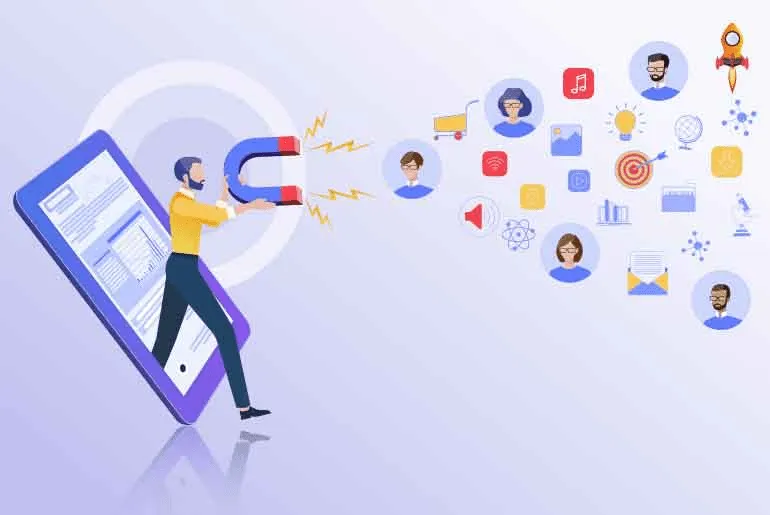
B2B lead generation is the process of identifying business to business opportunities by capturing contact information such as job title, contact details, and contact data from prospective customers. It involves building lead capture forms, running paid ads, and creating video marketing content to attract ideal customers. Businesses often rely on strategies like account based marketing, responsive search ads, and lead nurturing to guide potential customers through the marketing funnel. With tools like marketing automation, companies can collect website visitors’ actions and implement lead scoring systems to qualify future sales based on specific behaviors and intent signals.
Why is B2B Lead Generation Important?
1. It Drives Business Growth
B2B lead generation helps businesses attract potential leads who are likely to become paying customers. Instead of relying on cold calls or random outreach, companies can use search engines and search engine optimization to draw relevant traffic and capture intent-driven leads.
- Using lead capture tools increases the chances of reaching the ideal customer.
- Companies can generate sales faster when leads are already familiar with their product.
2. It Improves Sales Efficiency
When leads are qualified using a lead generation strategy, sales departments and marketing departments waste less time on unfit prospects. This allows sales reps to focus only on sales leads with real interest.
- A focused sales process helps shorten the sales cycle.
- Teams can create marketing campaigns aimed at specific buyer personas.
“Sales reps spend only 35% of their time selling due to manual tasks,” says Salesforce. That’s why marketing and sales teams are increasingly turning to automation and smarter lead generation efforts.
3. It Creates High-Intent Engagement
Well-run lead generation campaigns target inbound leads by solving real pain points through valuable content. Instead of pushing messages, businesses attract quality leads with helpful information.
- Businesses see better conversion when using video marketing and email sign-up forms.
- Case studies and business success stories are effective for building trust.
What are B2B Leads?

B2B leads are business to business contacts who show interest in your product or service. These can come from paid ads, email forms, or marketing channels where prospective customers leave contact details.
Good leads help your sales team and marketing department work more efficiently by focusing on real opportunities. You can collect lead quality data using tools like lead scoring systems to filter out low-interest users.
When done right, this improves customer success and drives future sales. Whether you're targeting new leads or trying to generate high quality leads, it's all part of a consistent lead generation process.
Types of B2B Leads :
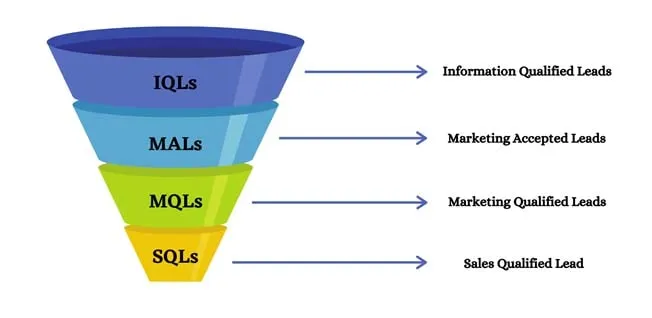
Not all leads are ready to make a decision the moment they discover your business. Some are just exploring, while others might already have a clear need and a budget in mind. That’s why it helps to understand the different types of B2B leads, so you can respond in a way that actually fits where they are in their journey.
Before you hand a lead to your sales team, it's important to know how engaged they are and what kind of follow-up makes sense. Here’s a quick breakdown of the main types you’ll come across.
Who Conducts B2B Leads Generation?

B2B leads generation isn’t handled by one person or team alone. It’s a shared effort between the marketing department and the sales department.
Both teams play specific roles, and when they work together, you get better results — not just more leads, but more qualified leads.
The Role of Sales and Marketing Teams
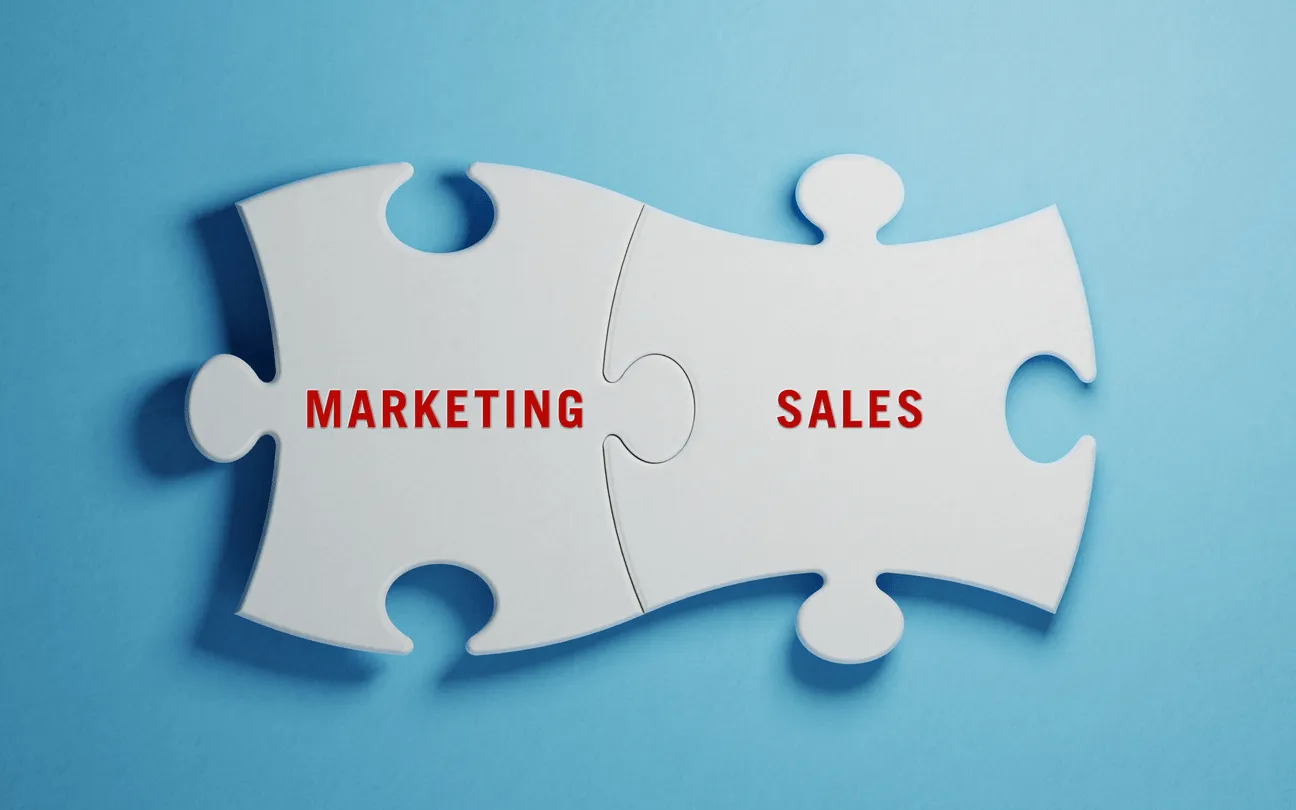
🔹 Marketing Team: Creates Awareness and Attracts Leads
The marketing team focuses on getting your business in front of the right audience. They help you show up in search results, get clicks, and drive interest from prospective customers.
Their key responsibilities:
- Running marketing campaigns
- These include email sequences, paid ads, and organic content that speak to specific buyer problems.
- Creating content using keyword insights
- They conduct keyword research to make sure the content answers what people are actually searching for.
- Using lead magnets and forms
- Tools like downloadable guides, checklists, and lead capture forms help gather contact details from interested leads.
- Driving interest for sales to follow up
- They bring in leads who may not be ready yet — but could be in the future.
🔹 Sales Team: Qualifies and Converts Leads
Once leads show interest, it’s the sales department that takes over to build conversations and move people through the pipeline.
Their key responsibilities:
- Using a lead scoring system
- This helps prioritize leads based on how engaged they are (e.g., visiting the pricing page, booking a call, replying to emails).
- Identifying sales qualified leads
- Not everyone is ready to buy. The sales team focuses only on the ones most likely to convert.
- Following up with quality leads
- They take the warmest leads and begin one-on-one conversations to understand their pain points.
- Generating more sales leads
- Through outreach, demos, and follow-ups, they actively work to grow the pipeline.
“Companies with aligned sales and marketing teams see 67% higher effectiveness at closing deals,” according to Marketo.
When both teams know their role and share information regularly, you don't just get names on a list — you get real opportunities ready for conversion.
How to Generate B2B Leads(Step-by-Step Process)?
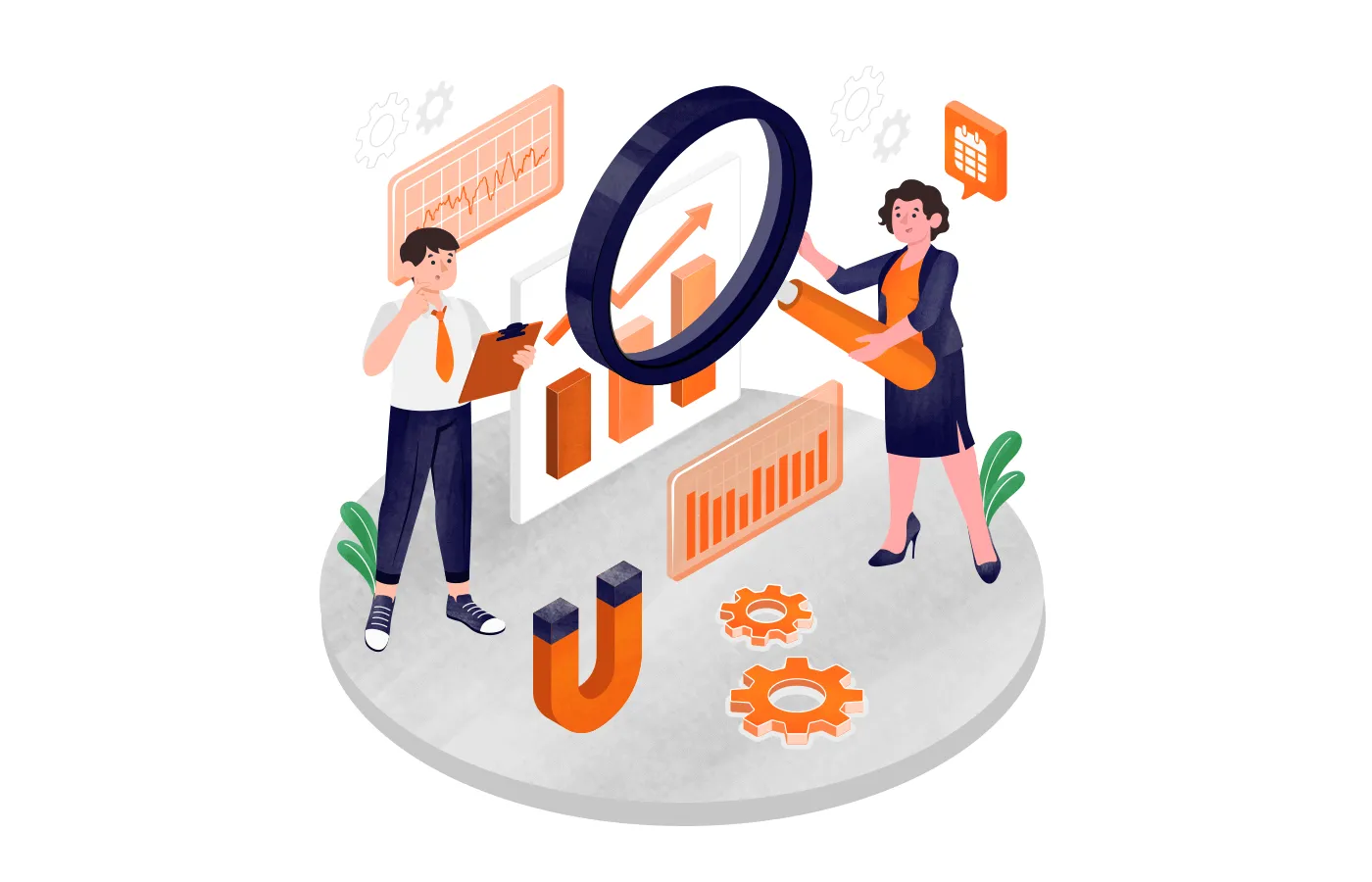
If you want to get serious about B2B leads generation, you’ll need more than just a form on your website. Let’s break down what actually works — step by step.
Step 1: Identify Your Ideal Buyer

Before you reach out to anyone, you need to know exactly who you’re talking to. That’s where building a clear profile of your ideal buyer comes in.
Here's how to start:
- Define job titles, industries, and business sizes that match your solution.
- Look at your existing customers — who are your best ones and why?
- Understand their pain points, goals, and how they make buying decisions.
💡 B2B buyers typically consume 3 to 5 pieces of content before engaging with a sales rep (Demand Gen Report).
Creating detailed buyer personas gives you a solid direction before you start outreach or content creation.
Step 2: Choose Your Lead Generation Strategy

Once you know who you’re targeting, choose the method(s) to reach them. Different strategies work for different stages in the funnel.
Effective options include:
- Cold emailing – personalize messages and follow up with value.
- Webinars – offer useful information before making a pitch.
- LinkedIn outreach – connect and engage with decision-makers.
- Original research – publish insights relevant to your industry.
- Landing pages – design pages focused on conversion, not just traffic.
Don't forget: A/B testing landing page headlines and forms can help you understand what drives more signups and conversations.
Step 3: Qualifying and Prospecting

Getting leads is one thing. Knowing which ones are worth your time is another. This step is all about separating the curious from the committed.
🔹 How to Qualify B2B Leads
You don’t need to chase every name on your list. Focus on quality over quantity.
To qualify a lead:
- Check if they match your ideal customer profile.
- Look at their activity (e.g., downloads, demo requests, email responses).
- Use a lead scoring system to track behavior and engagement.
- Ask qualifying questions in your forms (e.g., company size, role, budget).
📊 Salesforce reports that 68% of marketers say lead scoring is the most effective way to increase lead conversion rates.
🔹 How to Prospect B2B Leads
Prospecting is about reaching out to leads and starting a real conversation. You want to offer something useful, not just ask for their time.
Prospecting tips:
- Personalize your outreach based on job title and company.
- Use platforms like LinkedIn, email, and forums where your audience hangs out.
- Share valuable insights, not just your product pitch.
- Follow up — most responses happen after the 3rd or 4th touchpoint.
Cold email campaigns with 4–7 emails get 27% more replies than those with only 1–2 (Woodpecker).
Getting B2B leads doesn’t have to be complicated, but it does require structure, research, and consistency. Stick to these steps, and you’ll start seeing better-fit leads that actually convert.
20 B2B Lead Generation Strategies That Work in 2025

1. A/B Test High-Intent Pages
Even small changes on your high-traffic pages can impact conversions. Testing different versions helps you figure out what actually drives leads.
How to do it:
- Start with pages that already get traffic (pricing, demo, sign-up).
- Test headlines, CTA text, button color, and form length.
- Track results over time — give each version enough traffic before comparing.
2. Add Calculators or Quizzes
Interactive tools like ROI calculators or quick quizzes help engage visitors while gathering lead info.
How to do it:
- Choose a topic that solves a real pain point.
- Keep it short and easy to complete.
- Ask for contact details at the end to send results.
3. Offer Free Tools or Templates
People love free resources that actually help. They’ll give their email in exchange for something valuable.
How to do it:
- Create templates (checklists, pitch decks, email scripts).
- Offer tools like budget planners or audit checkers.
- Gate the download behind a simple form.
4. Use Exit-Intent Popups
Catch visitors before they leave with a final offer or question. It can stop them from bouncing for good.
How to do it:
- Use popups on pricing or resource pages.
- Offer a discount, free guide, or ask for feedback.
- Keep the copy short and clear.
5. Host Live Q&A Sessions

Real-time interaction builds trust. A live Q&A makes you more approachable and solves user doubts.
How to do it:
- Promote sessions ahead of time via email and social.
- Focus on a topic your audience cares about.
- End with a CTA (free trial, signup, or content download).
6. Build Email Drip Campaigns
Email is still one of the best B2B lead nurturing tools. Drip sequences help guide leads over time.
How to do it:
- Segment your list based on interest or behavior.
- Write emails that educate, not just sell.
- Space emails 2–3 days apart and test subject lines.
7. Score Leads by Behavior
Not every lead is ready to buy. Lead scoring helps you focus on the ones who are.
How to do it:
- Assign points for actions (e.g., demo request, pricing view).
- Use a tool to automate scoring.
- Set a threshold for when to pass to sales.
8. Trigger In-App Surveys
If you offer software or digital products, in-app surveys help you learn what users want — and where they are in the buying process.
How to do it:
- Ask simple questions ("What made you sign up?").
- Show it after key actions (like after login or feature use).
- Use answers to qualify leads.
9. Join B2B Slack Groups

Slack communities are a goldmine for niche networking. Being active there builds visibility and trust.
How to do it:
- Join groups relevant to your industry.
- Don’t sell — offer help and share insights.
- Link to your content only when truly relevant.
10. Turn Content into Lead Magnets
Your best content can do more than inform — it can collect leads too.
How to do it:
- Turn blog posts into downloadable PDFs.
- Bundle related posts into an eBook.
- Add email-gated versions of your top resources.
11. Send LinkedIn DMs
Direct messages can start conversations when done right — especially if they’re personal and respectful.
How to do it:
- Keep it short (under 50 words).
- Mention something specific about their role or company.
- End with a light CTA — not a hard pitch.
12. Add Chatbots on Key Pages
Chatbots help engage visitors even when you’re not online. They answer questions, guide actions, and qualify leads.
How to do it:
- Add them to pricing, product, and contact pages.
- Program common questions and lead capture prompts.
- Route hot leads to your sales team in real-time.
13. Personalize Returning Visitor Content

Showing different content to return visitors can move them closer to action.
How to do it:
- Use cookies or tools like Clearbit Reveal.
- Show different CTAs based on pages viewed.
- Offer “next step” content like case studies or webinars.
14. Offer Time-Limited Trials
Urgency can drive action. A time-limited trial gives value while nudging visitors to act fast.
How to do it:
- Offer 7–14 day trials with all features.
- Remind them via email when time is running out.
- Include easy ways to upgrade during the trial.
15. Co-Create Content with Partners
Team up with others in your space to create valuable content — and reach their audience too.
How to do it:
- Choose partners with similar (not competing) audiences.
- Create webinars, guides, or expert interviews.
- Promote the content on both sides.
16. Launch ABM Campaigns
Account-Based Marketing (ABM) helps you go after specific high-value companies with tailored messaging.
How to do it:
- Identify your top target accounts.
- Create personalized landing pages or email sequences.
- Coordinate efforts between marketing and sales.
17. Retarget Abandoned Visitors

Some people won’t convert the first time — retargeting helps bring them back.
How to do it:
- Set up ad campaigns for users who bounced.
- Show helpful content, not just product ads.
- Use different messages based on the page they left.
18. Bid on Competitor Keywords
If someone’s searching for a tool like yours, they might also be looking at your competitors. Catch that intent.
How to do it:
- Use Google Ads to bid on branded competitor terms.
- Create landing pages that compare your product honestly.
- Avoid clickbait — focus on facts and value.
19. Build Niche Landing Pages
One-size-fits-all doesn’t work for landing pages. Targeted pages convert better.
How to do it:
- Create pages by use case, industry, or persona.
- Write clear, simple headlines and CTAs.
- Include testimonials or results from similar users.
20. Gated Reports or Data Insights
If you’ve got data or industry research, people are often willing to give their email to access it.
How to do it:
- Package survey results, case studies, or benchmarks.
- Use a clean form to collect emails before download.
- Promote through email, social, and blog posts.
These 20 strategies are proven, practical, and built to drive results. You don’t need to do all of them at once — just pick the ones that match your goals and start testing.
What are the Best Methods to Generate B2B Leads?

1. Content Marketing
Sharing valuable insights helps attract and build trust with potential buyers. It also supports SEO and long-term lead generation.
Why it works:
- Educates your audience with real solutions.
- Builds authority over time.
- Works well with email and social media channels.
2. Whitepapers & Case Studies
These help decision-makers see real-world outcomes before making a move.
Use them to:
- Highlight success stories.
- Share product-specific results.
- Address key objections with data.
3. Webinars
Live sessions offer direct value and position you as a trusted source.
To run effective webinars:
- Choose topics aligned with audience needs.
- Invite subject matter experts.
- Include Q&A and follow-up emails.
4. Blog

A well-maintained blog drives organic traffic and educates potential leads over time.
Focus your blog on:
- Answering common buyer questions.
- Sharing tactical how-to content.
- Linking to lead magnets.
5. Web Visitor Identification
Identify anonymous visitors to understand who’s checking you out.
Tools can help you:
- Track company names visiting your site.
- Prioritize outreach by behavior.
- Spot returning traffic from key accounts.
6. Social Selling
Engaging with prospects on social platforms builds trust and opens doors.
You can start by:
- Connecting on LinkedIn with relevance.
- Commenting on posts with insight.
- Sharing useful content regularly.
7. Advertising and Traffic Generation
Targeted ads help bring new people into your pipeline faster.
Use paid traffic to:
- Promote lead magnets.
- Drive webinar sign-ups.
- Retarget warm visitors.
8. Google Ads
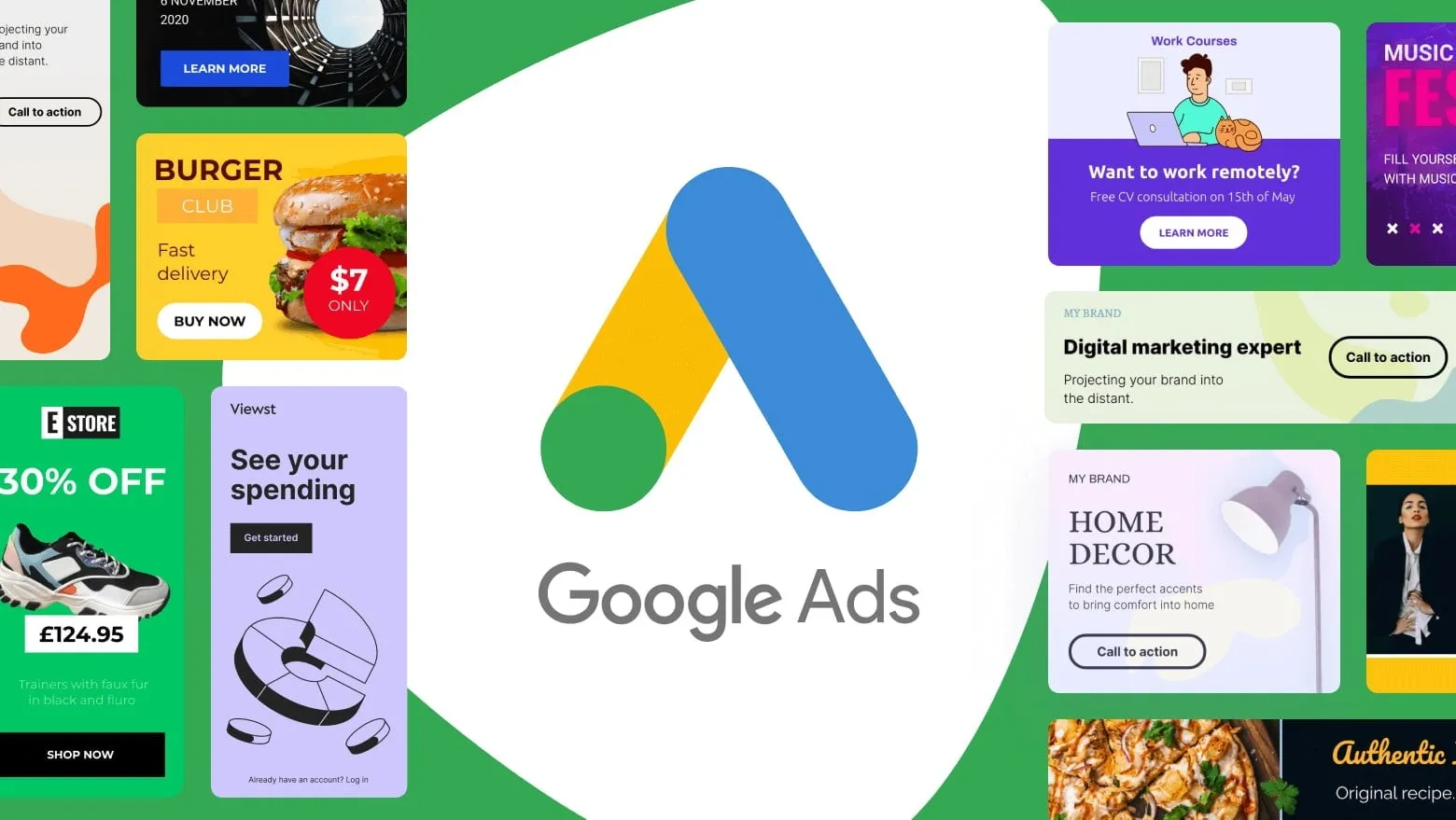
Search ads capture high-intent users already looking for your solution.
Best practices include:
- Using specific, relevant keywords.
- Writing clear ad copy with CTAs.
- Creating landing pages that match the ad.
9. LinkedIn Ads
LinkedIn’s targeting makes it powerful for B2B.
Try this approach:
- Target by job title or company size.
- Run lead form ads for quick conversions.
- Test sponsored content vs. message ads.
10. Native Advertising
These ads blend in with editorial content and can get more attention without feeling intrusive.
To get results:
- Match ad content to the platform’s tone.
- Link to valuable resources.
- Track clicks and lead form fills.
11. B2B Lookalikes: Generating Leads from Existing Customers
Your current clients can show you who to target next.
Here’s how to use them:
- Analyze top customer traits.
- Build lookalike audiences for ads.
- Create tailored messages that reflect shared needs.
Which B2B Sales Metrics Actually Matter?

1. Conversion Rate
This tells you how many of your leads are actually turning into customers. It’s a clear indicator of whether your funnel is working.
Why it’s important:
- Helps measure lead quality.
- Shows if your sales conversations are effective.
- Pinpoints where drop-offs happen.
2. Cost Per Lead (CPL)
CPL shows how much you spend to get each lead. If you’re spending too much and converting too little, something’s off.
Track CPL by:
- Dividing campaign cost by number of leads.
- Comparing across channels.
- Spotting expensive, low-performing campaigns early.
3. Marketing Qualified Leads (MQLs)
MQLs are people who’ve shown interest through marketing actions, like downloads or webinar sign-ups.
Use MQLs to:
- Understand early-stage interest.
- Refine your content and lead magnets.
- Warm up leads before handing them to sales.
4. Sales Qualified Leads (SQLs)
SQLs are leads that your sales team believes are ready for direct outreach. These are further along in the funnel than MQLs.
Track SQLs by:
- Looking at buying signals (e.g., pricing views).
- Using lead scoring systems.
- Aligning on definitions between sales and marketing.
5. Customer Acquisition Cost (CAC)
CAC measures the full cost of acquiring a customer — including ads, tools, and salaries.
To monitor CAC:
- Add up total acquisition costs over a time period.
- Divide by the number of new customers gained.
- Use it to evaluate profitability.
6. Return on Marketing Investment (ROMI)
ROMI helps you understand if your marketing spend is actually paying off in revenue.
Measure ROMI by:
- Subtracting marketing cost from revenue generated.
- Dividing by total marketing spend.
- Tracking over time to see what works best.
Focusing on these six metrics gives you a real look at what’s working — and what needs a fix. It’s not about tracking everything. It’s about tracking what actually helps you grow.
B2B Lead Generation Tools to Grow Sales Pipeline

1. Leadfeeder
Leadfeeder helps you discover which companies visited your website, even if they didn’t fill out a form. This gives your sales team a head start.
Why it’s useful:
- Identifies anonymous web traffic.
- Shows company names, behavior, and time on site.
- Helps prioritize outreach based on interest.
"Leadfeeder helps B2B businesses generate more leads by identifying companies that visit their website." — From your provided fact list
2. HubSpot Sales Hub
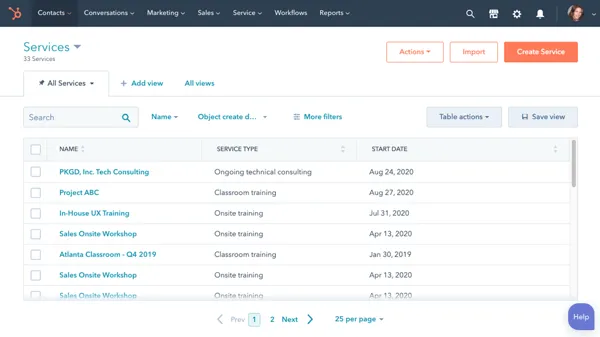
HubSpot’s sales tools make it easier to manage outreach, track activity, and stay organized — all in one dashboard.
What it does well:
- Tracks emails and follow-ups in real time.
- Lets you build automated outreach sequences.
- Connects marketing and sales activities in one platform.
According to HubSpot, aligned sales and marketing teams can lead to 36% higher customer retention.
3. Reply.io
Reply.io automates cold email sequences while keeping them personal. It’s ideal for teams doing outbound prospecting.
Key benefits:
- Create multi-step email and LinkedIn outreach.
- Tracks opens, clicks, and replies.
- Integrates with CRMs to keep your data clean.
4. Dealfront Target
Dealfront (formerly Echobot) is built for targeting and finding B2B leads across European markets.
Use Dealfront for:
- Building precise company lists based on firmographics.
- Accessing verified contact details.
- Tracking company intent and recent changes.
Segmenting based on company behavior and profile helps personalize outreach and drive more responses. — Based on provided insights
5. Bombora
Bombora uses intent data to show which businesses are actively researching topics related to your solution.
Why it matters:
- Helps spot leads before they fill out forms.
- Prioritizes outreach to warm companies.
- Syncs with your CRM to update lead scores automatically.
Understanding buyer intent early allows you to engage leads at the right time — before competitors do. — Based on your facts
These tools don’t just help you find more contacts — they help you find better ones, faster. If you're trying to build a healthy B2B sales pipeline, start with tools that give you visibility, automation, and insights that matter.
Frequently Asked Questions (FAQs)

1. What is a good B2B LinkedIn lead generation technique?
A strong approach is to start by identifying decision-makers in your target companies. Then send personalized messages that offer something useful — like a free resource or an invitation to a webinar. Avoid salesy pitches in the first message. Focus on starting a conversation.
2. What is targeted B2B lead generation?
It means you're not marketing to everyone. Instead, you're focusing only on companies or roles that actually need your product or service. You use filters like industry, location, and job title to narrow it down. This leads to better results and fewer wasted efforts.
3. What are the different techniques for lead generation?
Some common techniques include:
- Content marketing (like blogs, whitepapers)
- Email outreach with follow-ups
- Webinars or live Q&A sessions
- Lead magnets like checklists or templates
- Paid ads on platforms like Google or LinkedIn
4. How do B2B businesses generate leads?
They use a mix of strategies: creating helpful content, running campaigns, collecting contact info through landing pages, and reaching out directly. Tools like Leadfeeder and HubSpot also help identify website visitors and score them based on behavior.
5. How much does B2B lead generation cost?
It depends on your method. Some tools charge monthly fees, and ads come with a budget. On average, Cost Per Lead (CPL) for B2B ranges from $30 to $100, depending on industry and channel.
Conclusion
B2B leads generation doesn’t have to feel like guesswork. With the right strategies, tools, and a clear process, you can attract the kind of leads that actually move your business forward. The 20 proven methods we covered aren’t just ideas, they’re real things you can try, test, and build into your day-to-day.
Whether you’re just starting out or refining what’s already working, small steps can lead to steady results. Keep your focus on helping, not just selling, and the right leads will follow. Need a place to start? Pick one strategy and make it part of your next week.
Further Reading
To deepen your understanding of B2B lead generation and enhance your strategies, we recommend exploring the following resources. These articles provide valuable insights and practical tips to further improve your lead generation efforts:
- Strategies for Effective Lead Generation: Discover comprehensive strategies for generating B2B sales leads and accelerating your business growth. This resource offers actionable tips to enhance your lead generation techniques. Read more.
- Leveraging Social Media for Lead Generation: Understand the power of social media in the lead generation landscape. This guide provides detailed approaches to harness social media platforms to capture quality leads. Read more.
- Insights on Lead Generation: Gain insights into effective methods of lead generation and the latest trends that can transform your lead generation strategy. This article discusses innovative ways to attract and retain prospective clients. Read more.
- Email Marketing Techniques: Learn how to effectively use email marketing to generate leads. This article offers practical advice on crafting compelling emails that engage potential clients and drive conversions. Read more.
- Cold Emailing for Web Design Leads: Explore specific strategies for generating leads through cold emailing, with a focus on web design services. This guide includes tips on how to structure cold emails that capture attention and yield responses. Read more.

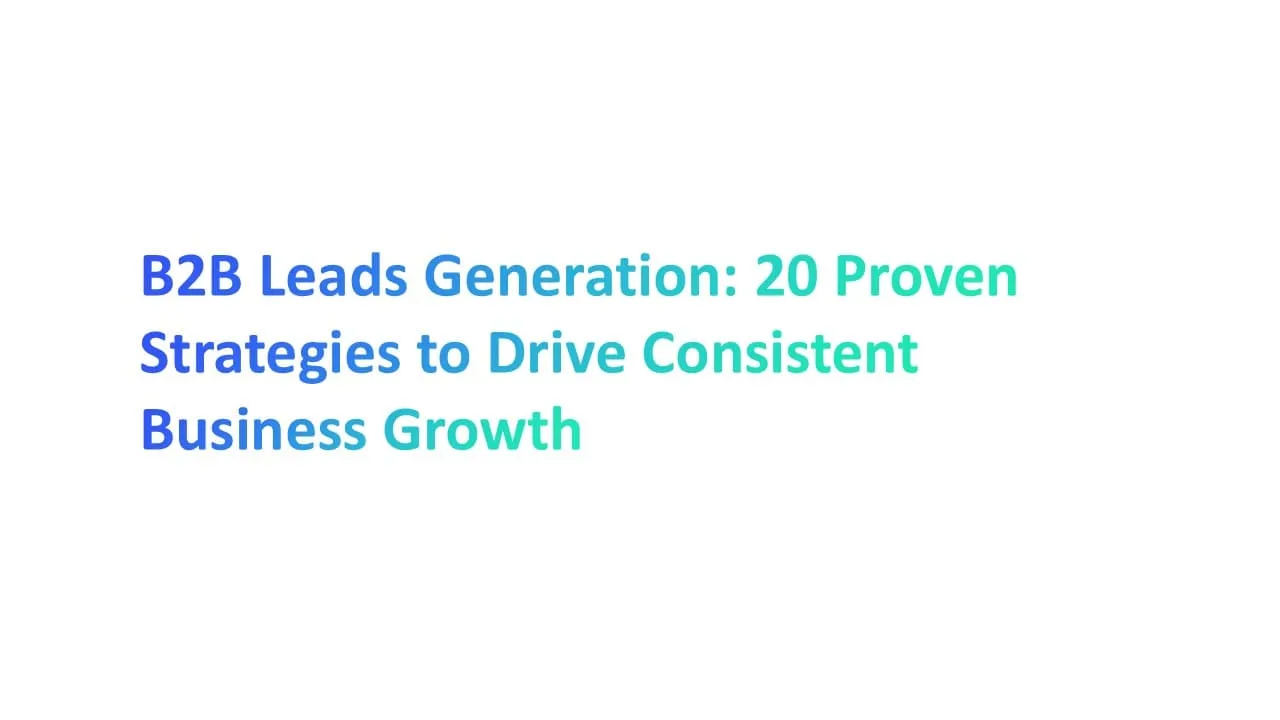



.jpg)

.jpg)
